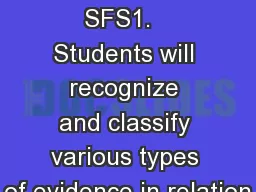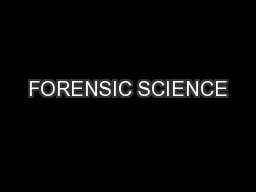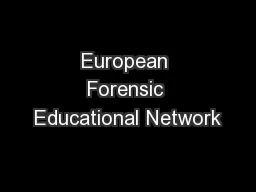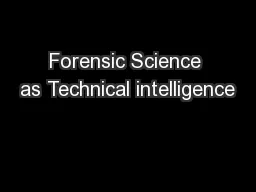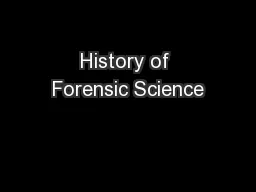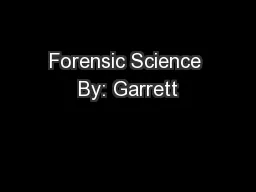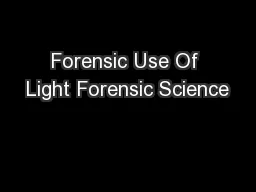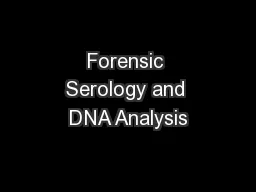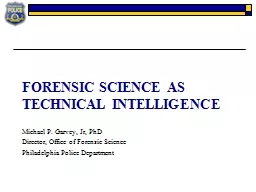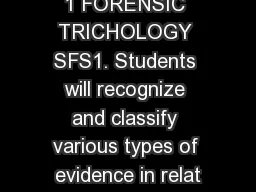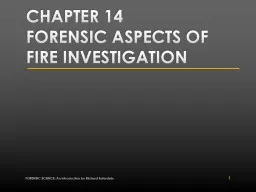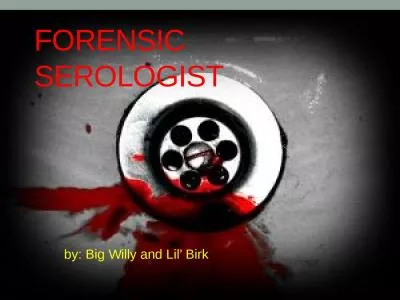PPT-Forensic Science SFS1. Students will recognize and classify various types of evidence
Author : pasty-toler | Published Date : 2018-10-08
a Compare and contrast the history of scientific forensic techniques used in collecting and submitting evidence for admissibility in court eg Locards Exchange Principle
Presentation Embed Code
Download Presentation
Download Presentation The PPT/PDF document "Forensic Science SFS1. Students will r..." is the property of its rightful owner. Permission is granted to download and print the materials on this website for personal, non-commercial use only, and to display it on your personal computer provided you do not modify the materials and that you retain all copyright notices contained in the materials. By downloading content from our website, you accept the terms of this agreement.
Forensic Science SFS1. Students will recognize and classify various types of evidence: Transcript
Download Rules Of Document
"Forensic Science SFS1. Students will recognize and classify various types of evidence"The content belongs to its owner. You may download and print it for personal use, without modification, and keep all copyright notices. By downloading, you agree to these terms.
Related Documents

